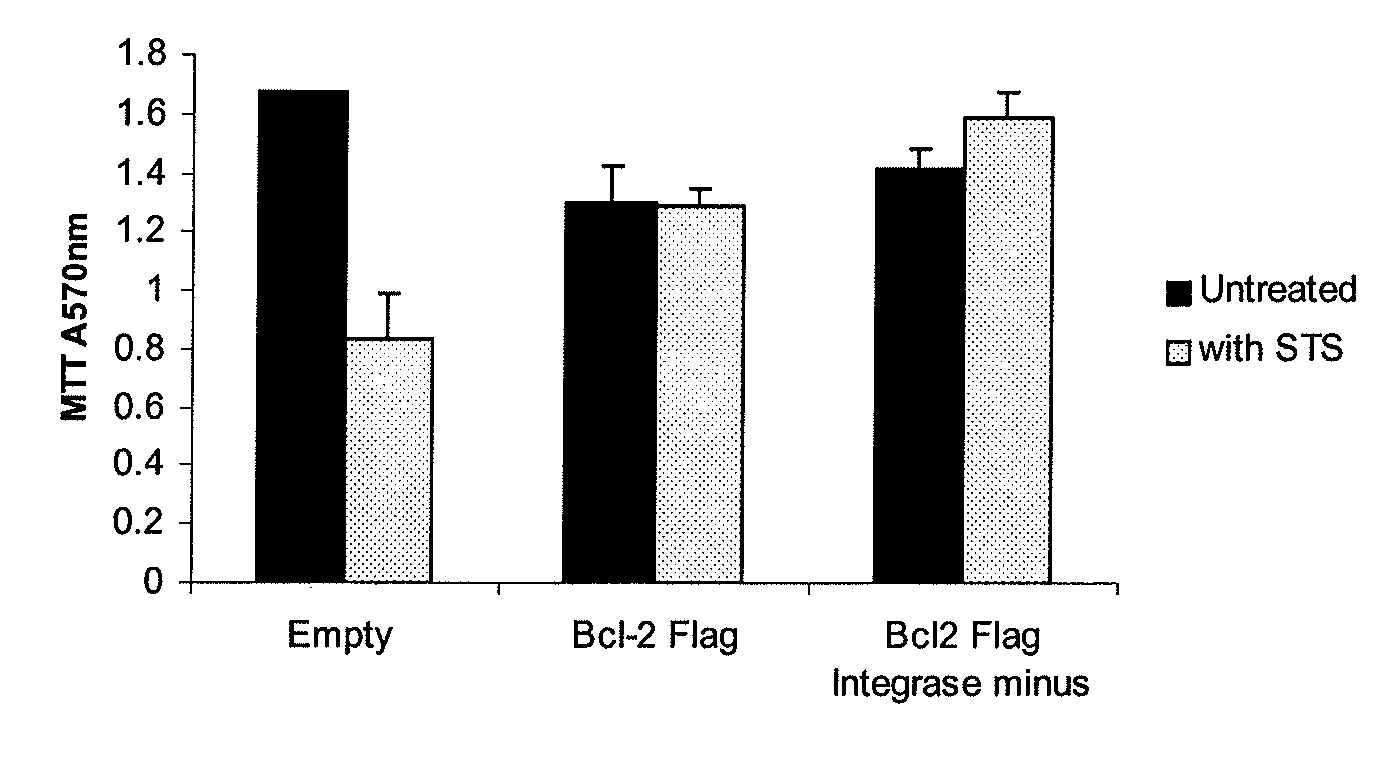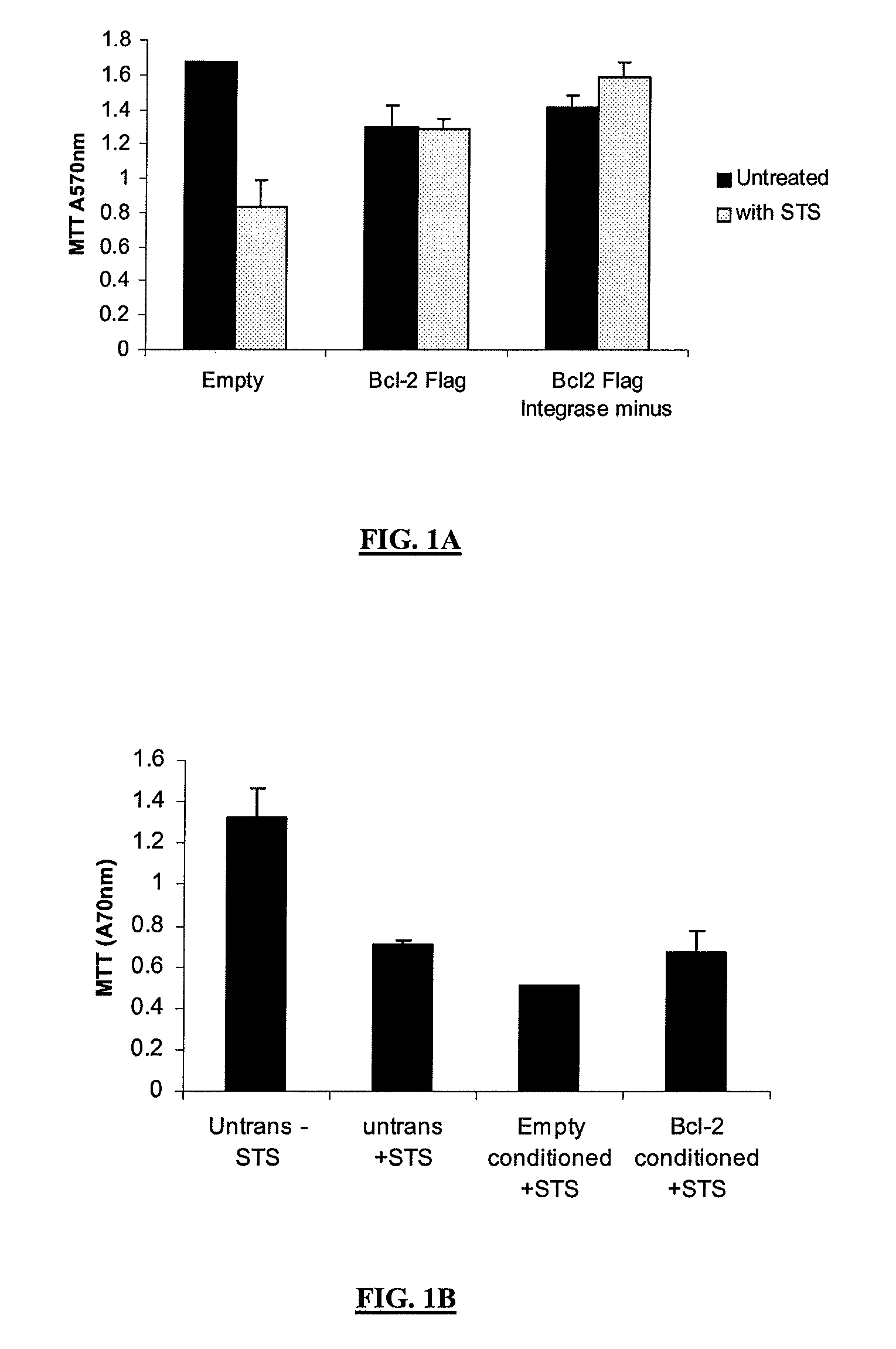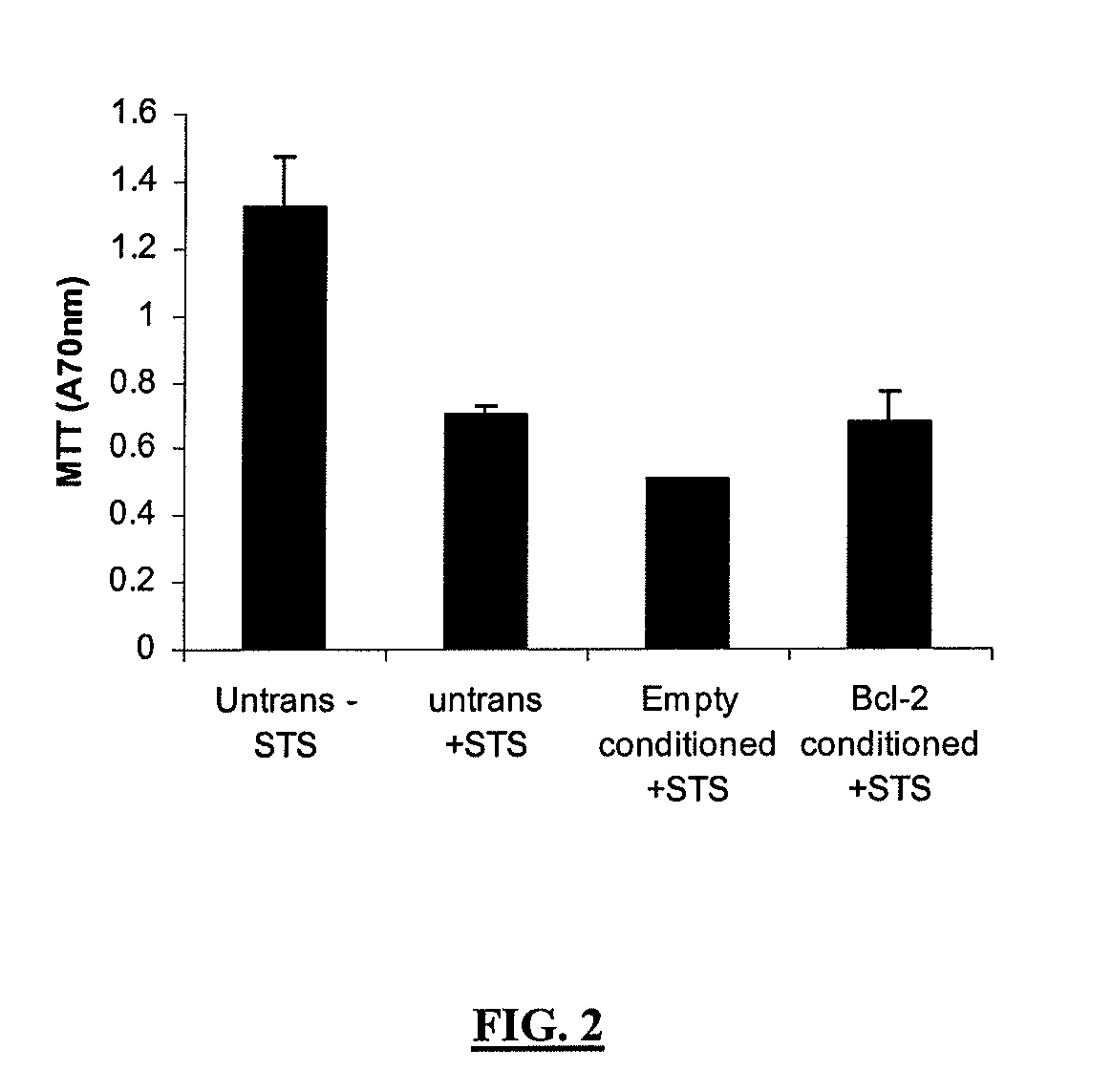Viral Vectors
a virus and vector technology, applied in the field of viral vectors, can solve the problems of retroviral vector replication defect, difficult to achieve, lack of suitable vectors and transfection methods, etc., and achieve the effect of preventing the reverse transcription of rna to dna
- Summary
- Abstract
- Description
- Claims
- Application Information
AI Technical Summary
Benefits of technology
Problems solved by technology
Method used
Image
Examples
example 1
Protection from Staurosporine (STS)-Mediated Toxicity in Cortical Neurons Transduced with Integrase Defective Vectors
[0162]Primary cortical neurons were cultured from Wistar rat embryos (gestation day 18) and plated at a density of 75,000 cells per well of a 24-well plate. One week post plating cells were transduced with EIAV vectors (using a multiplicity of infection of 10 transducing units / cell) encoding the anti-apoptotic gene BCL-2 or a control vector. A third EIAV vector encoding the BCL-2 transgene, but lacking the gene responsible for mediating integration of the viral genome into the host cell (integrase minus), was also transduced. Five days post transduction the cells were exposed to staurosporine at a concentration of 1 μM for 24 hours. Cells were assessed for viability using the MTT assay and induction of apoptosis was investigated using a caspase 3 / 7 detection kit (Promega). The MTT assay demonstrated that over expression of BCL-2 from the integrase positive EIAV vector...
example 2
Conditioned Medium from Cortical Neurons Transduced with BCL-2-Flag is Unable to Protect Against Staurosporine-Induced Apoptosis
[0163]To investigate whether the neuroprotective effect described above was a consequence of BCL-2 secretion into the culture media or BCL-2 over expression mediating the release of some other survival factor, conditioned media from similar cultures to those described above, and transduced for 5 days with the same EIAV vectors, were removed and placed onto untransduced sister cultures. The cells were exposed to 1 μM staurosporine for 24 hours and the MTT assay performed immediately after the incubation period. The results of the MTT assay demonstrated that the conditioned media from each of the EIAV transduced cultures did not mediate any neuroprotection against staurosporine-induced toxicity. This result suggests that the results observed above were not mediated by a released neuroprotective factor or secreted BCl-2 from transduced cells.
PUM
| Property | Measurement | Unit |
|---|---|---|
| Nucleic acid sequence | aaaaa | aaaaa |
Abstract
Description
Claims
Application Information
 Login to View More
Login to View More - R&D
- Intellectual Property
- Life Sciences
- Materials
- Tech Scout
- Unparalleled Data Quality
- Higher Quality Content
- 60% Fewer Hallucinations
Browse by: Latest US Patents, China's latest patents, Technical Efficacy Thesaurus, Application Domain, Technology Topic, Popular Technical Reports.
© 2025 PatSnap. All rights reserved.Legal|Privacy policy|Modern Slavery Act Transparency Statement|Sitemap|About US| Contact US: help@patsnap.com



